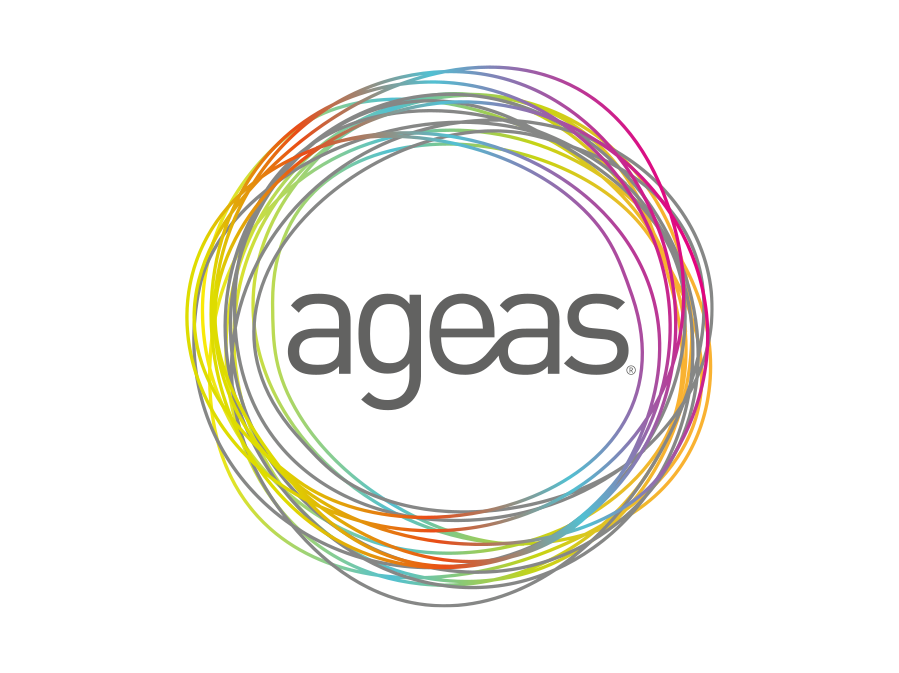Accessibility and Equity Regional Variation in Private Healthcare

As an FCA-authorised expert with a hand in arranging over 800,000 policies, we at WeCovr know that choosing private medical insurance in the UK isn't just about providers; it's about your postcode. This guide explores the intricate link between your location, income, and the private healthcare landscape in 2025.
Updated discussion on how postcode, income, and local NHS service variation affect PMI market growth in 2025
The UK's private medical insurance (PMI) market is experiencing a profound shift. Once seen as a luxury perk, it's increasingly viewed as a necessity by many. This change isn't happening uniformly across the country. A complex interplay of regional factors—your postcode, average local income, and the performance of your local NHS trust—is creating a deeply varied landscape of accessibility and cost.
For anyone considering private health cover in 2025, understanding these regional dynamics is no longer just interesting—it's essential for making an informed decision. This article breaks down exactly how geography shapes the PMI market and what it means for you and your family.
The 'Postcode Lottery': More Than Just an NHS Issue
The term "postcode lottery" has been used for decades to describe the variation in NHS service quality and waiting times across the UK. However, this phenomenon now casts a long shadow over the private sector, influencing everything from the price of your premium to the availability of specialists.
In 2025, the impact of your postcode on private healthcare is twofold:
- It Drives Demand: Regions with longer NHS waiting lists naturally see higher demand for PMI. If the wait for a routine hip replacement is 18 months in one county but only 6 months in another, residents in the former are far more likely to explore private options.
- It Dictates Cost: Insurers are actuaries at heart. They base their premiums on risk and cost. The cost of treatment at private hospitals varies significantly by region. A procedure at a top London hospital can cost substantially more than the same one in a hospital in Newcastle or Cardiff. Insurers pass this cost variation directly on to you through your monthly premium.
This creates a paradox: the very areas where NHS pressures make PMI most desirable are often the areas where premiums are highest due to the cost of private facilities.
What is an 'Acute' Condition? A Crucial Distinction
Before we go further, it's vital to understand what private medical insurance is for. Standard UK PMI policies are designed to cover acute conditions.
- An acute condition is a disease, illness, or injury that is likely to respond quickly to treatment and lead to a full recovery. Think of things like joint replacements, cataract surgery, or treatment for hernias.
- PMI does not cover chronic conditions—illnesses that are long-lasting and cannot be fully cured, like diabetes, asthma, or high blood pressure.
- Crucially, PMI also excludes pre-existing conditions—any health issue you had before your policy began.
This is the fundamental principle of private health cover in the UK. It's for new, treatable conditions that arise after you take out the policy.
NHS Waiting Lists: The Primary Driver of PMI Growth
The single biggest factor pushing UK residents towards private healthcare remains the unprecedented pressure on the National Health Service. As of late 2024, NHS England's waiting list for consultant-led elective care stood at over 7.5 million treatment pathways. While efforts are being made to reduce this, the sheer scale of the backlog means long waits are an unfortunate reality for millions into 2025 and beyond.
However, the national figure masks huge regional disparities.
| NHS Region | Median Wait Time (Weeks) - Elective Care | % of Patients Waiting > 52 Weeks |
|---|---|---|
| London | 12.1 | 2.9% |
| South East | 13.5 | 3.8% |
| Midlands | 14.8 | 5.1% |
| North West | 15.5 | 6.2% |
| Wales (All) | 22.1 | 15.0% |
| Scotland (All) | 19.8 | 9.5% |
Data Note: Figures are illustrative based on recent trends from NHS England, Public Health Wales, and Public Health Scotland. Actual figures fluctuate monthly.
What does this table tell us?
- A Clear Regional Divide: Patients in the Midlands and North West of England, as well as those in Wales and Scotland, face significantly longer average waits than those in London and the South East.
- The Long-Wait Problem: The percentage of patients waiting over a year for treatment is substantially higher outside of the South East of England. For someone in chronic pain needing a new knee, waiting over a year is a life-altering prospect.
This direct experience of long waits is the primary catalyst for individuals and families to look for alternatives. When faced with a year or more of pain and reduced mobility, the monthly cost of a PMI policy can suddenly seem like a very worthwhile investment.
Income, Affordability, and the North-South Divide
While NHS pressures create the desire for private healthcare, household income determines the ability to afford it. Here, the UK's persistent North-South economic divide comes into sharp focus.
According to the Office for National Statistics (ONS), gross disposable household income (GDHI) per head is highest in London and the South East. This means families in these regions have more money left over after taxes and essential spending, making a £50 to £150 monthly PMI premium more manageable.
How this impacts the market:
- Higher Penetration in the South: The percentage of the population with private medical insurance is highest in London (around 25%) and the South East (around 18%), compared to rates as low as 6-8% in the North East and Wales.
- Employer-Funded Schemes: A significant portion of the PMI market is made up of corporate policies provided by employers. These are heavily concentrated in the service and financial sectors of London and the South East, further skewing regional uptake.
- The Affordability Squeeze: In regions with lower average disposable incomes, PMI is often perceived as an unaffordable luxury, even if local NHS waiting times are severe. This creates a difficult situation where those who might benefit most from private care are least able to access it.
An expert PMI broker like WeCovr can be invaluable here. By comparing the whole market, they can find policies that fit tighter budgets, perhaps by introducing a higher excess or by selecting a more restricted hospital list, making cover more accessible regardless of your income level.
Urban vs. Rural: The Private Hospital Gap
Beyond the broad North-South divide, there is a stark difference in private healthcare provision between urban and rural areas. Major cities are hubs for private medical infrastructure.
- London: Home to a dense network of world-renowned private hospitals like The London Clinic, The Cromwell Hospital, and numerous HCA facilities.
- Major Regional Cities: Manchester, Birmingham, Bristol, and Edinburgh have a strong and growing cluster of private hospitals and clinics.
- Rural Areas: In contrast, rural parts of Wales, Scotland, the South West, and Northern England have very few private hospitals. Residents may need to travel 50 miles or more to reach the nearest facility.
This has a direct effect on your PMI policy:
- Hospital Lists and Pricing: Insurers offer different "hospital lists" on their policies. A policy with a comprehensive list including expensive central London hospitals will cost far more than one with a list of regional or partner hospitals. If you live in a rural area, you may not need a London-centric list, which can be a way to save money.
- Access to Specialists: The majority of top consultants work from private hospitals in major cities. While a PMI policy gives you the choice of specialist, your practical choice may be limited by geography if you're unwilling or unable to travel.
- The Rise of "Six-Week" Options: Some policies offer a popular "NHS Six Week" option. This means your PMI will only kick in if the NHS wait for a specific treatment is longer than six weeks. In regions with shorter NHS waits, this option can significantly reduce your premium, as it's less likely to be triggered.
How Insurers Price Your Premium: A Look Under the Bonnet
So, how do insurers like Bupa, Aviva, and AXA Health actually calculate your premium based on your postcode? It's a sophisticated process based on a few key data points:
- Age: This is the single biggest factor. The older you are, the higher the statistical likelihood of you needing treatment, so premiums rise with age.
- Postcode: Your address is used to determine the likely cost of treatment in your area. They analyse the costs charged by your local private hospitals.
- Underwriting: The type of underwriting you choose (e.g., 'Moratorium' or 'Full Medical Underwriting') affects the price.
- Excess Level: Agreeing to pay a larger voluntary excess (the amount you pay towards a claim) will lower your monthly premium.
- Hospital List: As discussed, the range of hospitals you want access to will heavily influence the cost.
Let's look at an example for a healthy 45-year-old non-smoker seeking a mid-range policy with a £250 excess.
| City | Average Estimated Monthly Premium | Primary Reason for Variation |
|---|---|---|
| London (Central) | £110 | High cost of private hospital treatment |
| Bristol | £85 | Moderate hospital costs, good availability |
| Manchester | £80 | Competitive market with several hospital groups |
| Newcastle upon Tyne | £70 | Lower average private treatment costs |
| Inverness | £65 | Fewer local private options, lower claim probability |
Disclaimer: These are illustrative estimates for 2025. Actual quotes will vary based on individual circumstances, chosen provider, and level of cover.
The table clearly shows that where you live can make a difference of £40 a month or more for the same person and the same level of cover. This is why simply getting a single quote online isn't enough; you need a comprehensive market comparison that accounts for your specific location and needs.
Bridging the Gap: The Role of Technology and Wellness
While the regional disparities are stark, technology is beginning to level the playing field in some important ways. The COVID-19 pandemic accelerated the adoption of digital health, and this has become a core feature of modern private medical insurance UK policies.
Virtual GP Services: Nearly all major PMI providers now include a 24/7 digital GP service as a standard benefit. This allows you to have a video or phone consultation with a GP, often within hours, from anywhere in the UK. For someone in a rural area with long waits for a local GP appointment, this benefit alone can be transformative. It provides equitable access to primary care advice, diagnoses, and prescriptions, irrespective of your postcode.
Mental Health Support: Many policies now offer access to digital mental health platforms, providing services like online cognitive behavioural therapy (CBT), counselling sessions, and mindfulness apps. This democratises access to mental health support, which can be particularly sparse in non-urban areas.
Proactive Wellness and Health: Leading insurers and brokers are moving beyond just paying for treatment. They are actively encouraging members to stay healthy. This includes:
- Discounts on gym memberships and fitness trackers.
- Access to nutritionists and lifestyle coaching.
- Rewarding healthy behaviour with premium discounts or other perks.
At WeCovr, we champion this holistic approach. That's why clients who purchase PMI or life insurance through us receive complimentary access to CalorieHero, our advanced AI-powered calorie and nutrition tracking app. We also offer discounts on other types of cover, helping you protect your family's health and finances in a more integrated way. These value-added benefits are available to all our clients, helping to close the wellness gap between regions.
Final Thoughts: Navigating the 2025 PMI Landscape
The decision to invest in private health cover in 2025 is more complex than ever. The market is not a single, monolithic entity but a patchwork quilt of regional variations, driven by local NHS performance, economic realities, and private facility distribution.
Your postcode is a powerful determinant of both your need for PMI and the price you will pay for it. While this can seem daunting, it also presents an opportunity. By understanding these dynamics, you can make smarter choices.
- If you live in a high-cost area like London, consider a policy with a higher excess or a more selective hospital list to manage costs.
- If you live in a rural area, prioritise a policy with a strong digital GP service and ensure the hospital list covers the facilities you can realistically travel to.
- Regardless of where you live, remember the fundamental rule: PMI is for new, acute conditions, not pre-existing or chronic ones.
The most effective way to navigate this complex market is to seek independent, expert advice. A specialist broker can analyse your specific circumstances—your age, location, budget, and health concerns—and compare policies from across the market to find the one that offers the best possible value for you.
Does my postcode really affect my private medical insurance premium?
Can I get private health cover if I have a pre-existing condition?
Is it cheaper to get PMI if I live in the North of England than in the South?
What is an 'acute condition' in the context of PMI?
Ready to see how your postcode affects your options? Get a clear, personalised, and no-obligation quote from WeCovr today. Our expert team will compare the UK's leading insurers to find the right private health cover for your needs and budget, at no cost to you.
Why private medical insurance and how does it work?
What is Private Medical Insurance?
Private medical insurance (PMI) is a type of health insurance that provides access to private healthcare services in the UK. It covers the cost of private medical treatment, allowing you to bypass NHS waiting lists and receive faster, more convenient care.How does it work?
Private medical insurance works by paying for your private healthcare costs. When you need treatment, you can choose to go private and your insurance will cover the costs, subject to your policy terms and conditions. This can include:• Private consultations with specialists
• Private hospital treatment and surgery
• Diagnostic tests and scans
• Physiotherapy and rehabilitation
• Mental health treatment
Your premium depends on factors like your age, health, occupation, and the level of cover you choose. Most policies offer different levels of cover, from basic to comprehensive, allowing you to tailor the policy to your needs and budget.
Questions to ask yourself regarding private medical insurance
Just ask yourself:👉 Are you concerned about NHS waiting times for treatment?
👉 Would you prefer to choose your own consultant and hospital?
👉 Do you want faster access to diagnostic tests and scans?
👉 Would you like private hospital accommodation and better food?
👉 Do you want to avoid the stress of NHS waiting lists?
Many people don't realise that private medical insurance is more affordable than they think, especially when you consider the value of faster treatment and better facilities. A great insurance policy can provide peace of mind and ensure you receive the care you need when you need it.
Benefits offered by private medical insurance
Private medical insurance provides numerous benefits that can significantly improve your healthcare experience and outcomes:Faster Access to Treatment
One of the biggest advantages is avoiding NHS waiting lists. While the NHS provides excellent care, waiting times can be lengthy. With private medical insurance, you can often receive treatment within days or weeks rather than months.
Choice of Consultant and Hospital
You can choose your preferred consultant and hospital, giving you more control over your healthcare journey. This is particularly important for complex treatments where you want a specific specialist.
Better Facilities and Accommodation
Private hospitals typically offer superior facilities, including private rooms, better food, and more comfortable surroundings. This can make your recovery more pleasant and potentially faster.
Advanced Treatments
Private medical insurance often covers treatments and medications not available on the NHS, giving you access to the latest medical advances and technologies.
Mental Health Support
Many policies include comprehensive mental health coverage, providing faster access to therapy and psychiatric care when needed.
Tax Benefits for Business Owners
If you're self-employed or a business owner, private medical insurance premiums can be tax-deductible, making it a cost-effective way to protect your health and your business.
Peace of Mind
Knowing you have access to private healthcare when you need it provides invaluable peace of mind, especially for those with ongoing health conditions or concerns about NHS capacity.
Private medical insurance is particularly valuable for those who want to take control of their healthcare journey and ensure they receive the best possible treatment when they need it most.
Important Fact!
We can look at a more suitable option mid-term!
Why is it important to get private medical insurance early?
👉 Many people are very thankful that they had their private medical insurance cover in place before running into some serious health issues. Private medical insurance is as important as life insurance for protecting your family's finances.👉 We insure our cars, houses, and even our phones! Yet our health is the most precious thing we have.
Easily one of the most important insurance purchases an individual or family can make in their lifetime, the decision to buy private medical insurance can be made much simpler with the help of FCA-authorised advisers. They are the specialists who do the searching and analysis helping people choose between various types of private medical insurance policies available in the market, including different levels of cover and policy types most suitable to the client's individual circumstances.
It certainly won't do any harm if you speak with one of our experienced insurance experts who are passionate about advising people on financial matters related to private medical insurance and are keen to provide you with a free consultation.
You can discuss with them in detail what affordable private medical insurance plan for the necessary peace of mind they would recommend! WeCovr works with some of the best advisers in the market.
By tapping the button below, you can book a free call with them in less than 30 seconds right now:
Our Group Is Proud To Have Issued 800,000+ Policies!
We've established collaboration agreements with leading insurance groups to create tailored coverage
























How It Works
1. Complete a brief form

2. Our experts analyse your information and find you best quotes

3. Enjoy your protection!

Any questions?
Learn more

Who Are WeCovr?
WeCovr is an insurance specialist for people valuing their peace of mind and a great service.👍 WeCovr will help you get your private medical insurance, life insurance, critical illness insurance and others in no time thanks to our wonderful super-friendly experts ready to assist you every step of the way.
Just a quick and simple form and an easy conversation with one of our experts and your valuable insurance policy is in place for that needed peace of mind!